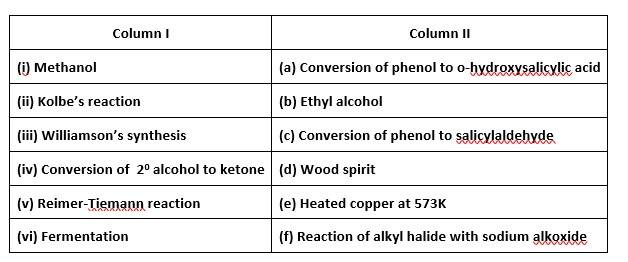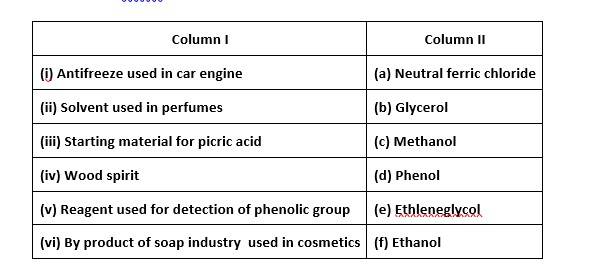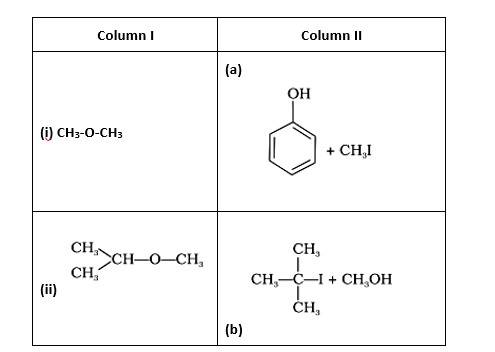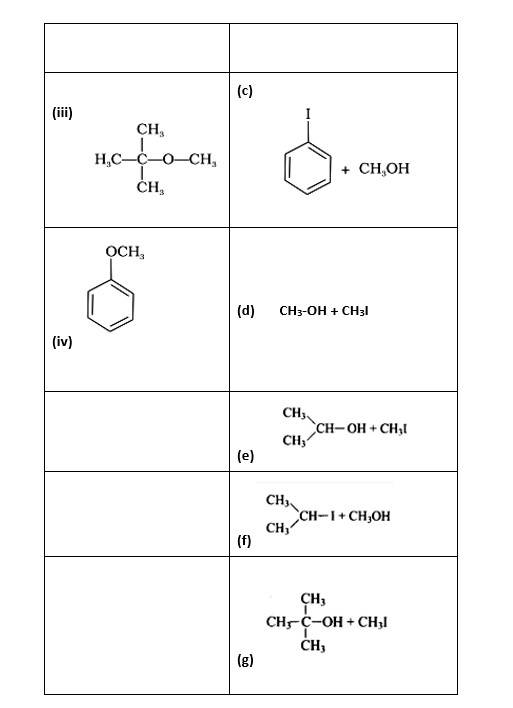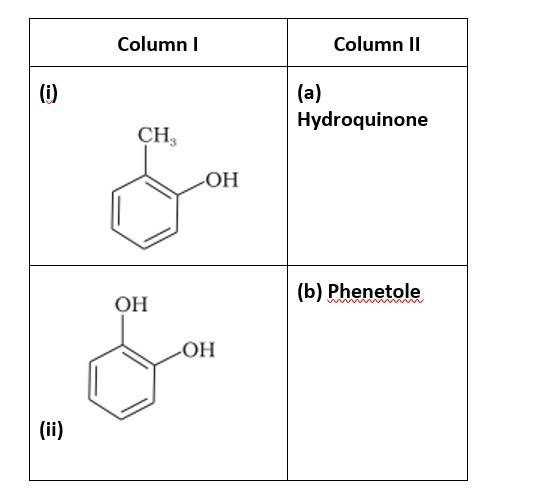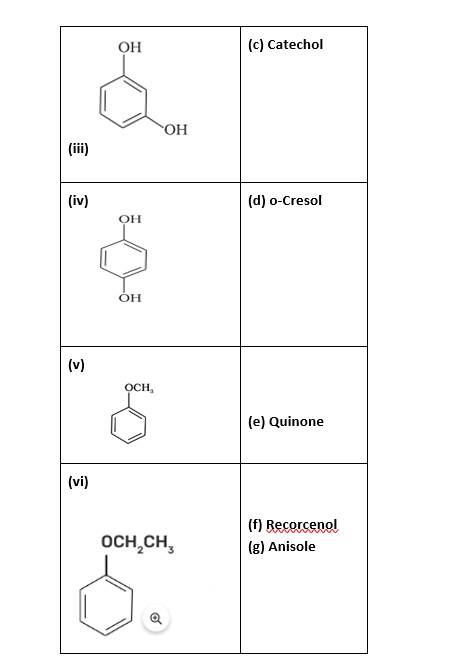Alcohol Phenol And Ethers
Get insights from 261 questions on Alcohol Phenol And Ethers, answered by students, alumni, and experts. You may also ask and answer any question you like about Alcohol Phenol And Ethers
Follow Ask QuestionQuestions
Discussions
Active Users
Followers
New answer posted
5 months agoContributor-Level 10
This is a assertion and reason answer type question as classified in NCERT Exemplar
(iv) Assertion is a wrong statement but reason is correct.
Explanation: Correct assertion is the IUPAC name of the compound is 1- (2-propoxy) propane.
New answer posted
5 months agoContributor-Level 10
This is a assertion and reason answer type question as classified in NCERT Exemplar
(i) Assertion and reason both are correct and reason is correct explanation of assertion.
Explanation: P-nitrophenol is more acidic as nitro group helps in the stabilization of the phenoxide ion by dispersal of negative charge due to resonance.
New answer posted
5 months agoContributor-Level 10
This is a assertion and reason answer type question as classified in NCERT Exemplar
(ii) Assertion and reason both are wrong statements.
Correct assertion: Addition reaction of water to but-1-ene in acidic medium yields butan-2-o1.
Correct reason: Addition of water in acidic medium proceeds through the formation of secondary carbocation.
New answer posted
5 months agoContributor-Level 10
This is a matching answer type question as classified in NCERT Exemplar
(i)- (d); (ii)- (a); (iii)- (f); (iv)- (e); (v)- (c); (vi)- (b)
New answer posted
5 months agoContributor-Level 10
This is a matching answer type question as classified in NCERT Exemplar
(i)- (e) ; (ii)- (f) ; (iii)- (d) ; (iv)- (c); (v)- (a); (vi)- (b)
New answer posted
5 months agoContributor-Level 10
This is a matching answer type question as classified in NCERT Exemplar
(i)- (d) (ii)- (e); (iii)- (b); (iv)- (a)
New answer posted
5 months agoContributor-Level 10
This is a matching answer type question as classified in NCERT Exemplar
(i)- (d); (ii)- (c); (iii)- (f); (iv)- (a); (v)- (g); (vi)- (b)
New answer posted
5 months agoContributor-Level 10
This is a multiple choice answer as classified in NCERT Exemplar
II. C6H5—CH2—OH
III. C6H5—CH—OH
|
CH3
Benzylic alcohol are those alcohols which have phenyl group attached to the alpha carbon of alcohol.
R—CαH2—OH : Benzylic Alcohol
The compound II and III have phenyl group attached at the Cα of the alcohol and thence they are benzylic alcohols
New answer posted
5 months agoContributor-Level 10
This is a multiple choice answer as classified in NCERT Exemplar
I. Br2/water
III. Neutral FeCl3
Phenol does not give the bromine water (Br2/water ) test whereas ethanol gives the bromine water.
Phenol on reaction with neutral FeCl3 forms a colored complex with Fe3+ ion whereas ethanol does not form the colored complex with neutral FeCl3.
New answer posted
5 months agoContributor-Level 10
This is a multiple choice answer as classified in NCERT Exemplar
I. CrO3 in anhydrous medium.
II. Pyridinium chlorochromate.
III. Heat in the presence of Cu at 573K.
KMnO4 is a strong oxidising agent and oxidises the primary alcohol to ketone. Hence cannot be used as a reagent to oxidise primary alcohols to aldehydes.
Taking an Exam? Selecting a College?
Get authentic answers from experts, students and alumni that you won't find anywhere else
Sign Up on ShikshaOn Shiksha, get access to
- 65k Colleges
- 1.2k Exams
- 679k Reviews
- 1800k Answers

